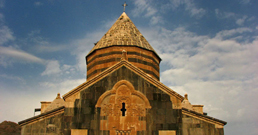Christ’s birth took place halfway through the period of Parthian rule in Iran (250 BC – 224 AD), a dynasty which allowed more freedom of religion than some of the later Persian rulers.
At the time of the Sassanian dynasty (224 AD – 652 AD), although Christianity spread in western regions of the country, there were still periods of followers being persecuted, usually at times of conflict and war with Rome. This had not been the case prior to the establishment of Christianity as the state religion of the Roman Empire.
Later, the advent of Islam slowed any Christian expansion, but it was recognised as a protected minority. The Mongol conquest allowed a relative freedom of religious expression, and when some Mongol queens converted to Christianity, the possibility of a Christian revival arose.
In the nineteenth century, with the struggle over the Caucasus between the Qajar dynasty of Iran and the Russian Tsars, the Persian government sought to win the hearts of local Armenian and Georgian Christians, who otherwise might have been expected to favour their fellow Christians in Russia. Russia eventually prevailed and there was a mass migration of Armenian Christians from Azerbaijan towards present day Armenia.
The beautiful monastery and church of St. Thaddeus in Iranian Azerbaijan, described in this multimedia report and also known as the Black Church, has been restored several times over the centuries. Together with a few other remaining vestiges of Armenian Christian culture in the area, the church has now been recognised as a UNESCO World Heritage Site and given the title of the Armenian Monastic Ensembles of Iran.
 Like us on Facebook
Like us on Facebook
Share this story


